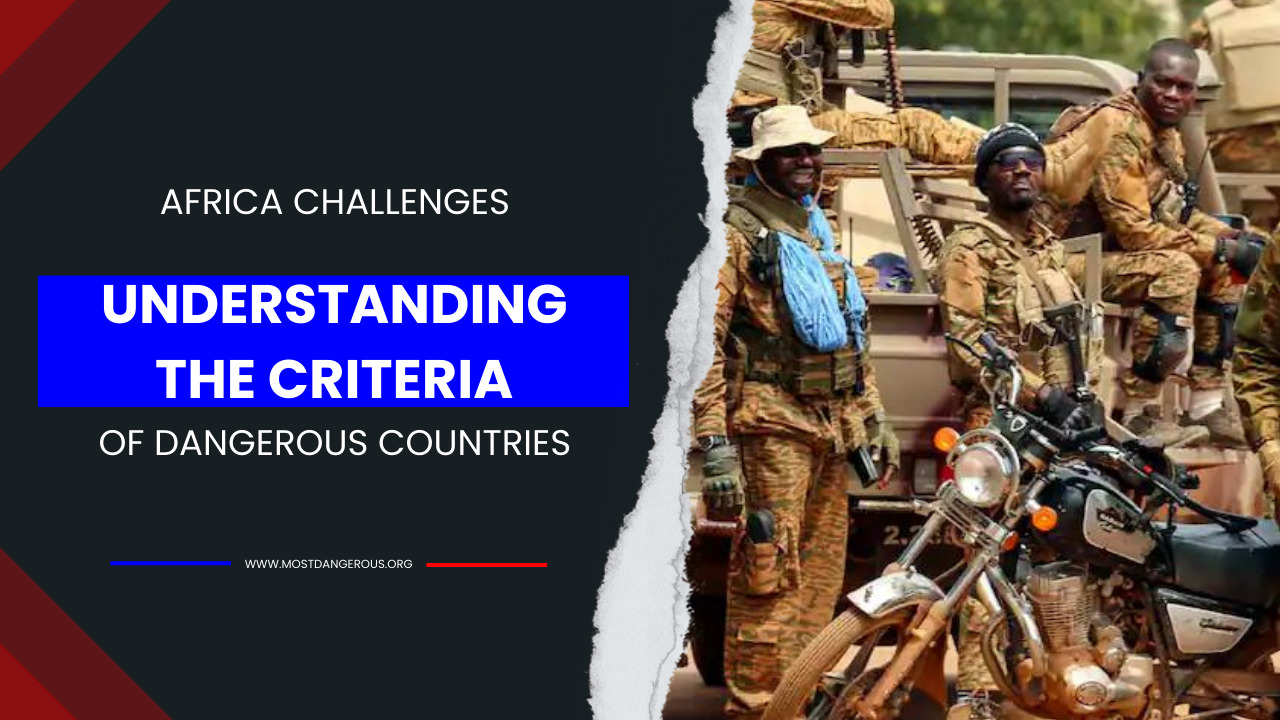Africa faces numerous challenges, including political instability, conflict, terrorism, and economic hardships. Somalia is the most dangerous country, with decades of civil war, insurgency, and terrorism. Al-Shabaab’s reign of terror poses a significant threat to stability.
South Sudan, the world’s youngest nation, has been marred by ethnic violence, political instability, and humanitarian crises since gaining independence. Libya’s chaos and lawlessness after the ousting of Muammar Gaddafi in 2011 have allowed extremist groups like ISIS to establish footholds, exacerbating security challenges.
Nigeria faces insurgency and ethnic violence, while the Democratic Republic of Congo faces entrenched conflict, political instability, and humanitarian emergencies. Addressing these issues requires concerted efforts from national governments, regional bodies, and the international community to promote peace, security, and development.
African ChallengesUnderstanding the Criteria: What Makes a Country Dangerous?
When assessing the safety of a country, factors such as political stability, crime rates, terrorism, and healthcare infrastructure play crucial roles.
Somalia: A Hotbed of Conflict and Instability
Somalia tops the list of Africa’s most dangerous countries, plagued by decades of civil war, insurgency, and terrorism.
The Threat of Terrorism: Al-Shabaab’s Reign of Terror
Al-Shabaab, a jihadist militant group, poses a significant threat to stability in Somalia, carrying out deadly attacks against civilians and security forces.
South Sudan: A Nation Ravaged by Conflict
South Sudan, the world’s youngest nation, has been marred by ethnic violence, political instability, and humanitarian crises since gaining independence.
Ethnic Tensions and Civil Strife: South Sudan’s Challenges
Ethnic rivalries, power struggles, and economic hardships have fueled violence and displacement, leaving millions in need of aid and protection.
Libya: Chaos and Lawlessness in the Aftermath of Civil War
Following the ousting of Muammar Gaddafi in 2011, Libya descended into chaos, with rival factions vying for control and extremist groups gaining influence.
The Rise of Extremism: ISIS and Other Threats
Libya’s power vacuum has allowed extremist groups like ISIS to establish footholds, exacerbating the country’s security challenges and contributing to regional instability.
Nigeria: Battling Insurgency and Ethnic Violence
Nigeria, Africa’s most populous country, grapples with a myriad of security threats, including Boko Haram insurgency, communal violence, and banditry.
Boko Haram’s Reign of Terror: A Persistent Threat
Boko Haram, a militant Islamist group, has carried out numerous attacks, including mass abductions, bombings, and raids, causing widespread fear and suffering.
Democratic Republic of Congo: Conflict and Humanitarian Crisis
The Democratic Republic of Congo (DRC) continues to face entrenched conflict, political instability, and humanitarian emergencies, particularly in the eastern regions.
Resource Curse and Regional Instability: DRC’s Challenges
The DRC’s vast mineral wealth has fueled violence and corruption, exacerbating tensions and perpetuating cycles of conflict and poverty.
Conclusion: Addressing the Challenges of Africa’s Most Dangerous Countries
In conclusion, Africa challenges are the most dangerous countries to face c, including political instability, conflict, terrorism, and economic hardships. Addressing these issues demands united efforts from national governments, regional bodies, and the international community to promote peace and security. Furthermore, addressing instability’s root causes and investing in sustainable solutions can lead to a safer, more prosperous future.
